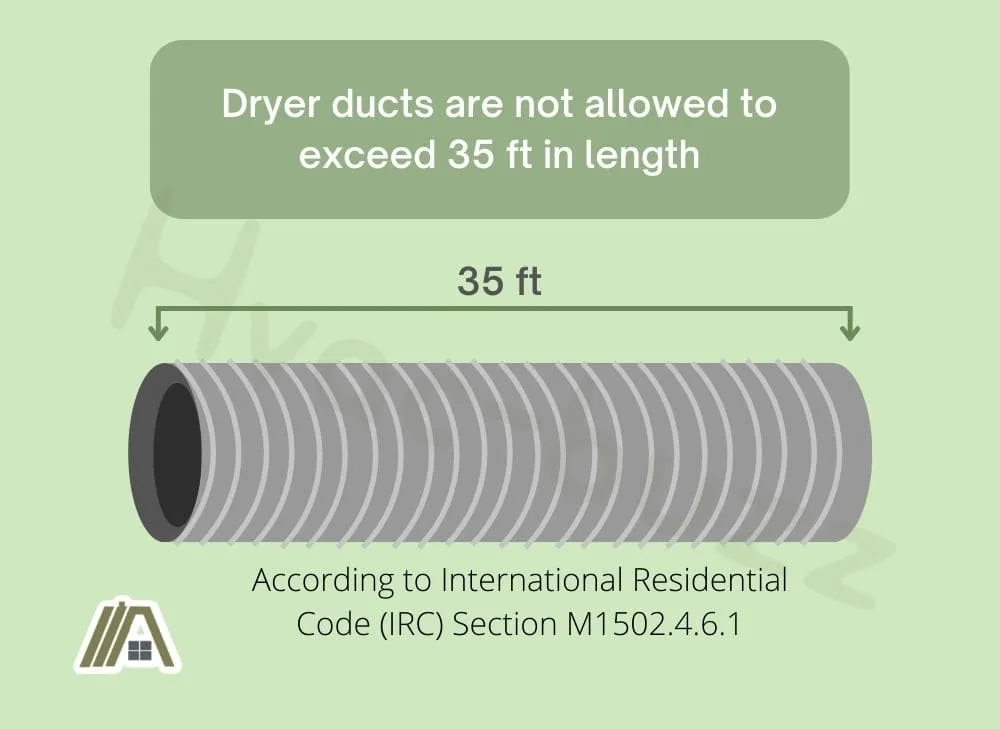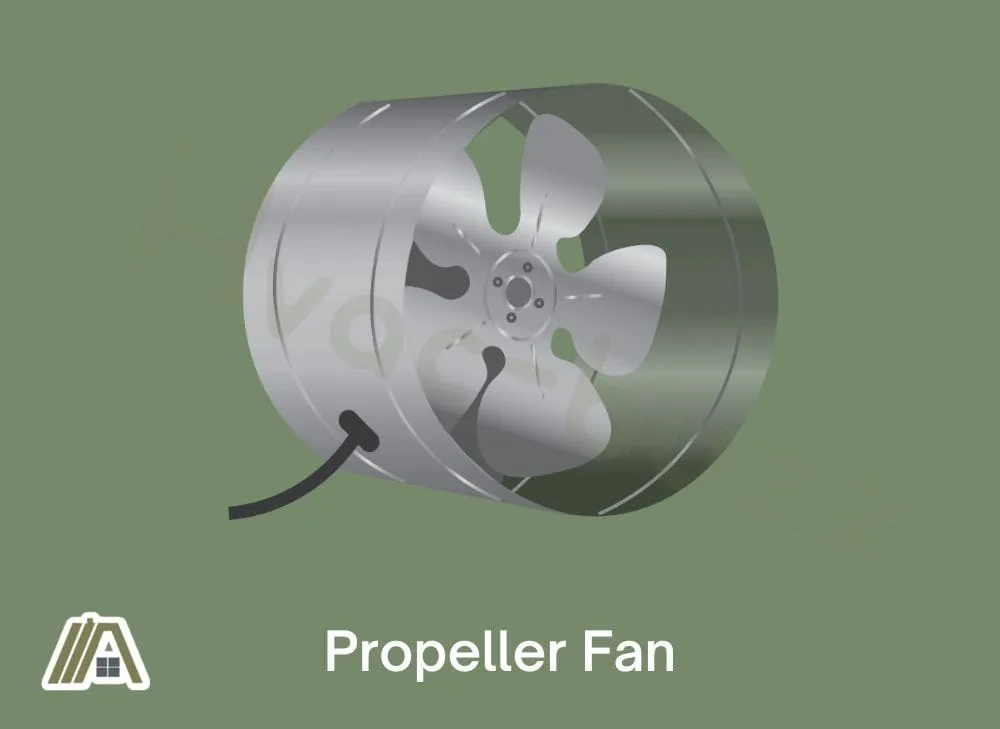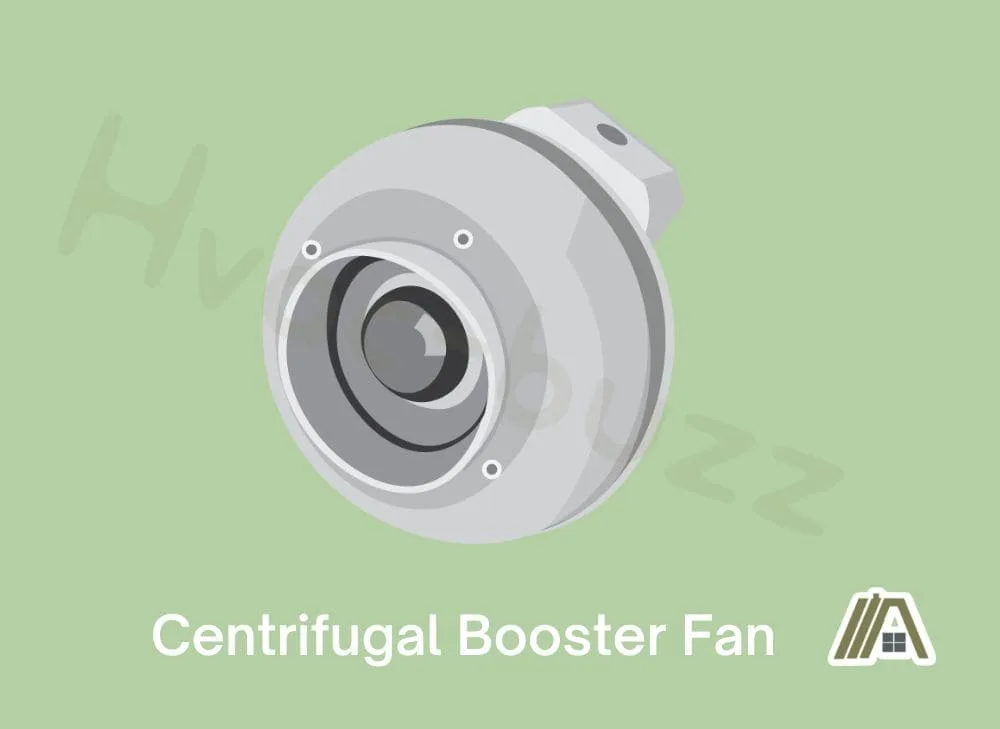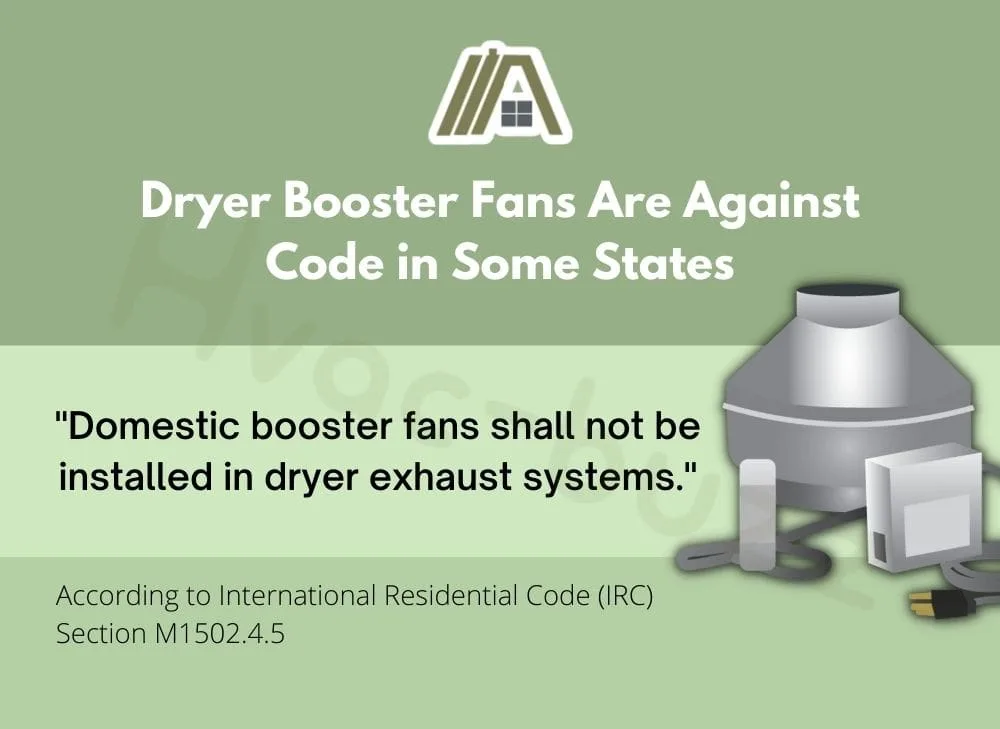Efficient dryer exhausting should be the goal of every person who owns a dryer. The exhaust that these appliances produce is hot and humid and carries lint and gases. None of these things are good for the inside of your home.
Dryer duct booster fans can effectively improve your dryer’s performance under certain conditions, although they are not permitted to be used as of the most recent update to the building codes applicable in most American states.

Dryer duct booster fans are needed when the dryer duct measures longer than 25 ft. Most domestic dryers cannot generate sufficient exhaust pressure to ensure the hot air, moisture, and lint are fully expelled through this entire duct length to the outside.
Dryer Ducting Has a Maximum Length
Dryer ducts are not allowed to exceed 35 ft in length, assuming the ducting runs straight all the way. This is set out in the International Residential Code (IRC) Section M1502.4.6.1.

This maximum length is based on how far dyer exhaust can travel before the airflow rate reduces to the point at which the exhaust is no longer venting from the ductwork properly.
As it is highly unlikely that your dryer ducting will have no bends in it, the IRC has provided a table in this same section that equates an elbow of a certain radius, angles, and surface (mitered or smooth) to a certain straight length of ducting.
For example, a single 45° elbow with a 6″ radius is the equivalent of 1 ft of straight ducting, so your maximum allowable length decreases from 35 ft to 34 ft with the addition of a single one of these elbows.
The reason why elbows reduce the allowable length is that bends reduce the airflow rate, meaning that the exhaust will not be able to travel the full 35 ft well enough to be vented outside properly.
Should the ducting exceed 35 ft, using a ventless dryer is a good alternative worth considering as no ducting is required.
Dryer Booster Fans Are Used for Long Duct Runs
Dryer booster fans are used in ducting that extends between 25 ft and 35 ft in straight length.
The reason why booster fans are used is that significant pressure is required to blow the dryers’ exhaust air through ducts in this length range, and even though it falls within the allowable range, these ducts are not going to be as efficient as possible.
Furthermore, any little issue like lint accumulation or a faulty backdraft damper is going to have more of an impact on the duct runs if there is no “boost” to the airflow.
How Do Booster Fans Work?
Booster fans increase the airflow rate. They follow two basic designs:
- The propeller-type booster fan fits inside the dryer duct, with the fan housing forming part of the ducting system.
- A centrifugal booster fan motor fits outside the duct while the fan section is integrated into the ducting.
The unit consists of an inlet connected to the duct facing the dryer. The air, partially assisted by the dryer, is sucked into the booster by a rotating fan blade (driven by an electric motor). The rotating fan then pushes the air out of the outlet connected to the exit side of the duct at a greater speed than it had when entering.
Basically, the fan gives the air an extra boost, which is why it is called a booster fan.
Most modern booster fans are fitted with a pressure relay or switch that detects when the dryer is turned on or off. When the dryer turns on, the fan turns on and only turns off two to three minutes after the dryer has stopped running.
The fan keeps running after the dryer has stopped to ensure that all the moisture, warm air, lint, and carbon monoxide (gas dryers) have been expelled from the duct.
Older booster fans are activated manually when the dryer is in use. This is not the best solution as it is easy to forget to turn the booster fan on or off.
Types Of Fans
Propeller Fan
Propeller-type fan blades are commonly used in booster fans where blow-through or inline-type fans are needed. Depending on their intended use, propeller fans are available in many shapes and sizes.
The propeller-type fans are great for use where large volumes of air need to be moved at low pressure.

Centrifugal Fan
The centrifugal fan uses a blade that can best be described as a squirrel cage. This blade design draws air into the rotating cage and expels it at ninety degrees to the fan. This booster fan is least prone to fouling up with lint due to its design.
The centrifugal fans are fitted into the ducting in place of a ninety-degree bend.

Problems Avoided by Using Booster Fans
Ineffective Venting of CO With Gas Dryers
Gas dryers release carbon monoxide, which is expelled out of the dryer duct under normal operating conditions along with warm air, moisture, lint, and dryer debris.
When the exhaust duct airflow is insufficient, this potentially deadly gas can remain in the duct and leak into the home.
Moisture Collection
Sufficient airflow within the dryer duct takes care of the moisture exhausted from the dryer during the drying process. When moisture accumulates in the duct, the potential of water leaking out onto a ceiling, wall, or floor, causing water damage, is very real.
Additionally, a water leak can cause a water puddle on the floor, which is a significant slipping hazard.
Potentially more serious is the fact that mold readily grows where there is excessive moisture.
Lint Build-Up
The accumulation of lint within a dryer duct is a potentially severe problem. Keeping the exhaust duct airflow strong reduces the possibility of the lint settling inside the vent or the dryer’s electrical components.
Lint is a highly flammable fiber that, when allowed to accumulate, packs together and forms a blanket-like covering inside the duct. This further reduces the rate of airflow, resulting in even more lint deposition and the initiation of a bad cycle.
Lint readily gets inside the dryer’s electrical components if the exhaust airflow is restricted. Many dryer components heat up during the drying process. Add some lint on the wrong components, like the element, and you have a genuine fire risk.
Long Drying Time
Dryer booster fans assist in shortening the drying time. The booster fan sucks the air out of the dryer, reducing the pressure on the dryer to expel the exhaust air and moisture. The additional airflow improves the dryer’s efficiency and potentially saves you some money.
Exhaust Duct Maintenance
Good airflow through the dryer duct by the fitment of a booster fan significantly reduces the possibility of lint moisture or debris accumulating inside the duct. A cleaner duct means less maintenance is required in terms of cleaning the duct.
Dryer Booster Fans Are Against Code in Some States
It is advisable to check your local codes before installing a booster fan, as many states do not permit their use.
In the IRC Section M1502.4.5, it says:
“Domestic booster fans shall not be installed in dryer exhaust systems.”

Dryer booster fans are not approved in the IRC (therefore, they are illegal) due to the increased fire risk. Booster fans that do not turn off when a fire occurs can draw the flames into the dryer duct and spread the fire into other parts of the house.
Sources
https://www.nachi.org/dryer-vent-safety.htm
https://www.aerovent.com/fan-testing-services/ul-705-safety-testing/
https://www.ccohs.ca/oshanswers/prevention/ventilation/fans.html

